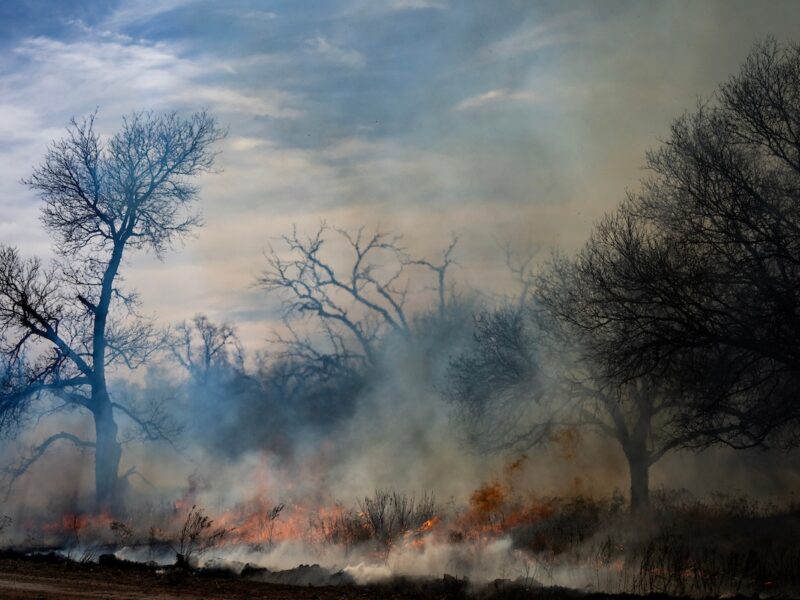Why Do Trees Change Color?
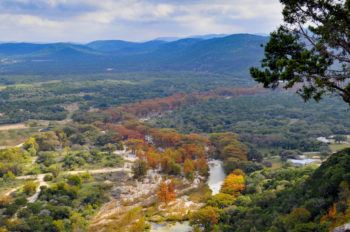
Trees are remarkable plants, and at no time is that more apparent than in the fall, when deciduous trees — bracing themselves for the winter — begin their transition into dormancy. The result is a vibrant and magnificent display of colors.
It’s not just an act of visual poetry – it’s chemistry. It can explain why some trees turn the color they do, why some regions have better displays of foliage and how that changing of colors benefits the tree itself.
Trees are surprisingly sensitive, and the reasons for a tree’s behavior in the fall could depend on the conditions it faced six or even nine months before.
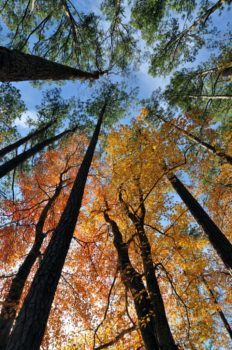
“Trees are entirely weather dependent,” said Allen Smith, regional forest health coordinator. A drought in May could lead to a quick, underwhelming tinge of foliage in November; a relentless heat wave in August can scorch tree leaves badly enough that they drop early and suddenly come autumn; and an early freeze from a cold front has the potential of sending trees into a panicked, sudden dormancy.
“The healthier the leaf is to begin with, the more vibrancy you’re going to see in the fall,” Smith said.
Leaves are colored by the same compound that makes up our complexion – pigment. The difference is that a tree’s pigmentation is predominantly influenced by the act of photosynthesis. Chlorophyll is a molecule used in photosynthesis, and it’s responsible for the green pigment. That is why green is the dominant color of any tree leaf for the majority of its life cycle. The other pigments — xanthophylls (yellows), carotenes (oranges), and anthocyanins (reds, purples, blues and blacks) — have also been there all along. It’s only when the tree begins to prepare for dormancy that these other pigments are allowed to shine – mostly because, in preparation for winter, the tree stops producing chlorophyll, the green pigmentation fades, and the other pigments are made visible.
The question of why some trees change certain colors has a more tenuous answer. Carotenes are pigments found in fruits and vegetables, including carrots, oranges, some bell peppers and even squash. Xanthophylls, the yellow pigment seen in most transitioning trees, is the same pigment that colors egg yolks and, occasionally, parts of the human eye. It is produced exclusively in plants, though, so it appears in humans and animals only through consumption.
The last of the primary pigments, and the most impressive of the fall colors, comes from anthocyanin. This is the same pigment that can be found in blueberries, blackberries, and red or violet roses. The coloration of the pigment depends on the PH level of the plant. The higher the PH level, the darker the coloration. This is the color seen in red maples, black cherry trees, Shumard oaks and more.
All of these pigments are attached to chemicals that serve a purpose for the plant. Carotenoids (carotene and xanthophyll) help trees absorb light energy, which is key when transitioning into dormancy because once the act of photosynthesis shuts down, the tree turns its focus to salvaging the energy in its leaves before they fall. Without photosynthesis to transform that light into sugar, the sunlight hitting the plant can actually become harmful: just as it can be harmful to people when they stay in the sunlight too long.
Carotenoids absorb that light to prevent sun damage, but anthocyanins go the extra mile. Unlike carotenoids, anthocyanins are generated for the sole purpose of shading the chlorophyll, preventing it from producing excess light energy. That’s why trees with anthocyanins are much more vibrant. The red pigment is being actively and intentionally produced to block sunlight.
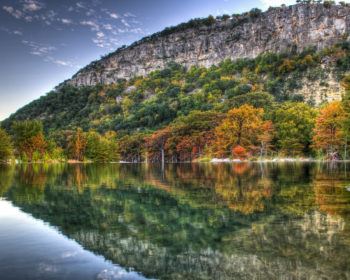
Only 10% of trees in temperate climates produce that red pigmentation. Very few areas of the United States have a higher rate of anthocyanin-producing trees. New England, being the most pronounced, has forests with as much as 70% of its trees producing anthocyanin.
While it’s difficult to match that level of color in the south, Texas does have pockets of forest that defy their subtropical climate and produce magical, color-shifting leaves. The Lost Maples State Park, for instance, hosts a whole forest of native Texas Red Maple trees; Bald Cypresses along the Guadalupe and Comal Rivers turn a gorgeous rust in the fall, outlining rivers across the Texas Hill Country; and hardwoods in the eastern forests of Texas stand vibrantly yellow, orange and red against the evergreen sea of longleaf pines.
“It just really depends on the tree and the ecosystem,” said Sam Rhodes, a staff forester with the Texas A&M Forest Service. “We do have wonderful fall foliage down here, we just don’t have a lot of forest cover types like they do in the northeast.”
Instead, the majority of Texas is occupied by oak and juniper woodlands. You can find pines and other hardwoods in the eastern regions of Texas, where more diverse forests provide the opportunity for fall foliage. The oak-mixed ecosystems of central-to-west Texas, however, tend to not be as showy as their counterparts further east. This can occur for a multitude of reasons, from heat scorching to the amount of carotenoids each tree produces.
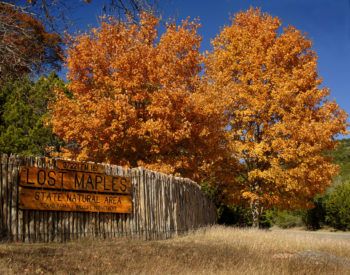
“Every tree is different, so every tree is producing different quantities of those chemicals,” Rhodes said. “If a tree doesn’t produce a whole bunch of it, it might not turn a whole bunch of colors in the fall. It might just turn brown, and then the leaf might fall.”
And it almost always depends on their environment – everything from climate and the length of the summer, to the type of soil the trees are growing in.
One perk of living in the south, though, is the delayed and sometimes prolonged period of transition that trees experience. This foliage map will show you how Texas trees are still predominantly in the early stages of transition. While the rest of the country is hunkering down for the winter, still has fall foliage to look forward to.
Download the Texas Scenic Views* app to find a fall foliage hotspot or a road-trip route with gorgeous seasonal scenery near you.
* This link is no longer active and has been removed.
Media contacts:
- Sam Rhodes, Staff Forester, Texas A&M Forest Service, samuel.rhodes@tfs.tamu.edu, 979-458-6630
- Allen Smith, Regional Forest Health Coordinator, Texas A&M Forest Service, lasmith@tfs.tamu.edu, 903-297-5094
- Stephen O’Shea, Communications Specialist, Texas A&M Forest Service, stephen.oshea@tfs.tamu.edu, 979-458-6649
